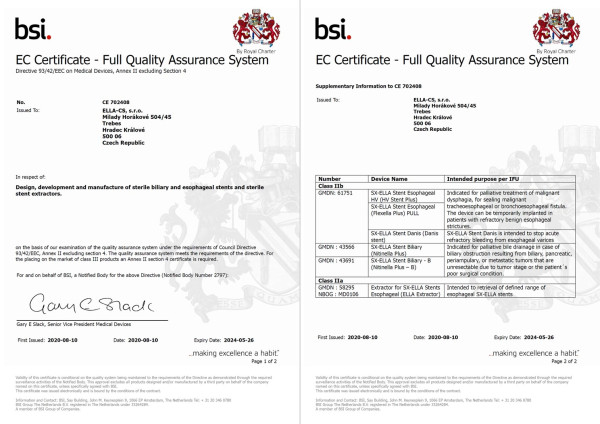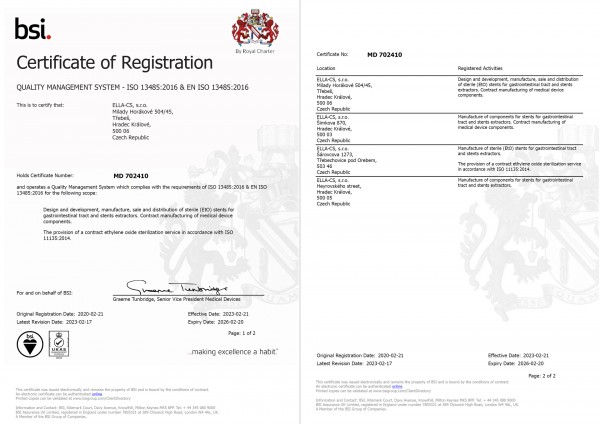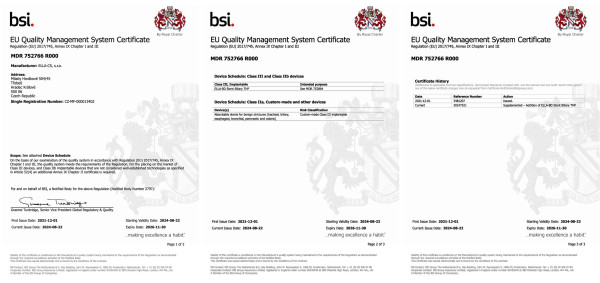Company mission
We strive to be a reliable partner for physicians in solving their problems in the experimental and clinical field. We try to respond to their requirements and to the patients‘ needs flexibly. We help the patients to restore hope for a life without limitations and, thus, our work has a higher importance and brings added value to society.


Company vision
Our long-term goal is to launch on the market other biodegradable stents not only for indications in the gastrointestinal tract, but also in the airways and other organs, and therefore become a global expert in biodegradable stents.
ELLA-CS is a purely Czech company with global reach
The Owner message
We would like to express our sincere thanks to all doctors and specialists who play a major role in the development and continuous improvement of ELLA-CS products, and we wish that our products continue to best serve the patients’ needs.
Karel Volenec – career profile (PDF)
HISTORY
The founder and owner of the company, Assoc. Prof. Karel Volenec, PhD., worked until 1986 at the Institute of Experimental and Clinical Radiobiology and the Use of Radioisotopes of the Medical Faculty of Charles University in Hradec Králové, where he dealt with new methods of cancer treatment. However, it was not possible to put the results of the work into practice at the faculty. Therefore, Karel Volenec decided to start a business and, from his own resources, founded the company ELLA-CS.

Today, our unique products help thousands of patients every year and gain recognition around the world. More than 90% of our production goes to over 70 foreign countries around the world and territories of our activities are constantly expanding. We currently own a number of Czech and international patents and have gained the respect of the competition for the world's unique biodegradable reinforcement, which helps to free the passage of the digestive tract and is now commonly mentioned in the medical literature in Europe and the USA.
What our work looks like
The company works on the basis of a quality management system in accordance with EN ISO 13485. The products are prepared in clean rooms classified according to EN ISO 14644 in Class 8. The company adheres to the principles of good manufacturing practice according to European and Czech standards.














